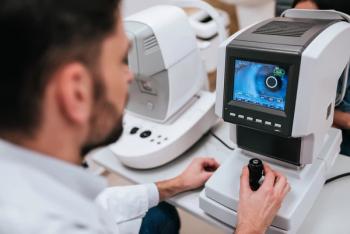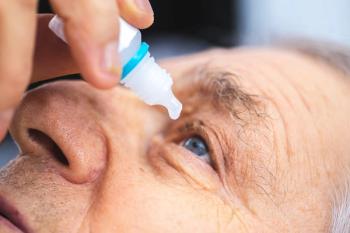
- May digital edition 2023
- Volume 15
- Issue 05
IKA Keratoconus Symposium provides access to expert opinions, latest research
The goal of the inaugural International Keratoconus Academy (IKA) Keratoconus Symposium in Scottsdale, Arizona, was to help preserve vision.
IKA Keratoconus Symposium Consensus Statement:
Because of the increased prevalence rates of keractoconus, in an optimal setting and in addition to their annual comprehensive eye examination, children should have at least 1 corneal tomography scan (corneal topography if corneal tomography is not available) by the age of 10 to 12 years old to rule out the presence of early ectatic corneal diseases. This is most important if there is a family history of keratoconus, decreased best corrected visual acuity, high refractive error, or any known risk factors for keratoconus.
The goal of the inaugural International Keratoconus Academy (IKA) Keratoconus Symposium in Scottsdale, Arizona, was to help preserve vision.
“This meeting changed the way I practice.” “The speakers were amazing.” “Best CE [meeting] I’ve been to in a very long time.”
“I cannot believe this was a first-time conference.” These are just a few of the comments I and the other chairs heard around the conference floor.
To say that we were blown away by the responses from the attendees, sponsors, and conference support staff is a huge understatement. Some of the most important and relevant discussions revolved around the significantly higher prevalence of keratoconus than previously understood and the need to identify and treat in the pediatric population as early as possible.
The mission of the inaugural IKA Keratoconus Symposium was to provide the highest quality education possible for the continuum of care for individuals with keratoconus. We picked the most relevant topics and then searched for the best possible faculty to address those topics. Inclusion of all eye care providers was paramount because all courses included both expert optometrists and ophthalmologists. We went out of our way to find eye doctors with keratoconus to discuss their personal experience. We wanted to address all aspects of the disease: diagnosis, assessment, genetics, proper billing and coding, medical contact lenses, and all treatments including corneal crosslinking, combined cataract surgery, and corneal transplantation.
We addressed special populations with keratoconus and their specific but less understood and highly specialized needs. We gave special attention to the population with Down syndrome as well as those in the US military (there are considerations for those who want to enlist or those who receive a diagnosis after they put on the uniform). Including industry partners such as the National Keratoconus Foundation to aid in education was also vital.
The symposium was also a gathering of significant knowledge, and we wanted to harness that knowledge into enduring documents that could help guide the primary eye care physician to provide the highest quality care for patients with keratoconus or refer them at the most appropriate time to specialized care. As a result, content was collected during designated sessions to build a group algorithm of care that will ultimately be available to eye care providers worldwide.
At the end of the day, the reason why we are here is to care for our patients. We know they are sometimes scared or worried about their most important sense, their vision. They have questions, and they want answers. So we invited them to participate in an online session with some of our expert ophthalmologists and optometrists. It was incredible to bring patients into our conference and answer their questions.
Overall, the IKA Keratoconus Symposium was a tremendous success. But it wasn’t enough; IKA needs to share this information with as many eye care providers as possible. Look out for our quarterly free webinars, presentations at upcoming eye conferences, journal articles, and most importantly, the 2nd Annual IKA Keratoconus Symposium from May 18 to 19, 2024, in Bethesda, Maryland.
Articles in this issue
over 2 years ago
Comanagement of refractive surgeries: What are you waiting for?over 2 years ago
Digital health care evolves in the aftermath of the pandemicover 2 years ago
Eye care space shows new developments in 2023 for diabetes careover 2 years ago
Measure twice, cut once: Repeat testing provides clarityover 2 years ago
Nerve growth factor: From discovery to development for human useNewsletter
Want more insights like this? Subscribe to Optometry Times and get clinical pearls and practice tips delivered straight to your inbox.








































